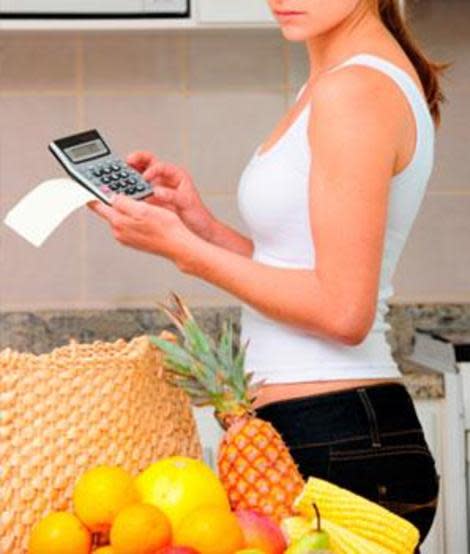Common Healthy Eating Barriers, Solved!
By Cynthia Sass, MPH, RD

According to a new national poll in ShopSmart magazine, the cost of healthful foods is the number one barrier that keeps women from eating healthfully. The poll found that 88 percent of the women surveyed 'make excuses' for not eating healthfully, with 57 percent citing cost as the top obstacle and 47 percent naming social temptations as the greatest barrier. And while half of women feel good about their eating habits and have tried to buy healthier foods in the past six months, nearly 40 percent believe they could do better. Here are a few more findings:
• 55 percent have tried to get their families to eat healthier, but nearly a quarter have been unsuccessful at doing so
• Dinner and breakfast rank equally as the healthiest meal women eat daily; just 24 percent feel lunch is the healthiest meal of the day
RELATED: 6 Stir-Fry Recipes Better than Takeout
• 63 percent have regular cravings for particular foods, with chocolate at the top of the list, but 45 percent say they crave healthy foods, including fruit, salad and veggies
If your biggest barrier is cost, there's an easy fix, because some of the healthiest foods in the supermarket are also some of the least expensive. In fact a new government study found that, per portion, healthy foods are no more costly than junk food. The analysis of over 4,000 foods found that items like carrots, onions, pinto beans, lettuce and bananas are all less expensive per portion than soft drinks, ice cream, chocolate candy, French fries, and sweet rolls! Skeptical? Here are a few small ways to save big:
Trade meat for beans
One can of beans, which contains 3.5 servings costs about $1.00 compared to $2.00 per pound for chicken on the bone (which is less expensive than chicken breast). Swapping black, pinto, kidney or white beans for meat in tacos, burritos, salads, and whole-grain pasta meals not only saves money, it ups your antioxidant intake, slashes calories, wipes out saturated fat and cholesterol, and just a half cup provides a quarter of the fiber you need daily. That may be one reason why regular bean-eaters have a lower risk of obesity and smaller waistlines.
Buy in-season, local produce
From either your farmer's market or local grocery store, in-season fruits and veggies are chock-full of flavor but can cost pennies per pound. Right now, at my local market, cantaloupes and bell peppers are 99 cents each. Load up when you see a great deal (like the 'buy one, get one free' blueberries I spotted today) and freeze the extras.
Exchange packaged snacks for popcorn kernels
One bag of organic popcorn, which contains 28 servings costs around $2.50 compared to about $3.50 a bag for potato, corn, and cheese snacks with 10 servings. Pop retro style on your stovetop in oil, but hold the butter. If you need some flavor, sprinkle with fresh herbs like Italian or chipotle seasoning.
RELATED: 5 Low-Calorie Mexican Meals
Invest in a water filter or filtering pitcher and ditch the soda habit
Two liter soda bottles are inexpensive, about $1.00 each. If you buy one a week, that's only $52.00 per year, but for about $25 you can buy a water filtering pitcher and get into the habit of drinking pure chilled water with every meal. Check out my previous post about why that's another smart weight-loss strategy.
In tomorrow's post I'll tackle the other barriers mentioned in the poll: social temptations and cravings, which often go hand in hand. But today tweet @cynthiasass and @Shape_Magazine your feelings about finances and healthy food. Does cost hold you back?
More on SHAPE:
The Truth About Runner's High
What's the No. 1 Most Important Change You Could Make to Your Diet?
Do Nightmares Burn Calories? And Other Weird Questions, Answered!
